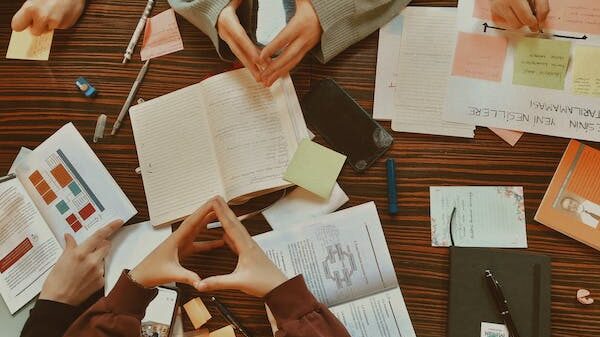Are you curious about how arts education can impact a child’s development? From music to visual art, the benefits of participating in creative activities extend far beyond just having fun. In fact, research has shown that exposure to the arts can enhance cognitive development, improve social skills and emotional regulation, and even boost academic performance. Whether your child is a budding artist or simply loves to explore their creativity, read on to discover the incredible impact that arts education can have on their growth and well-being!
Introduction to Arts Education
Arts education is a broad term that can refer to many different disciplines, including music, visual arts, dance, and theater. Arts education has been shown to have a positive impact on child development in a number of areas. For example, children who receive arts education have been shown to have higher levels of academic achievement, better social skills, and improved problem-solving ability.
There are many different ways to incorporate arts education into the classroom. One approach is to use the arts as a way to teach other subject areas. For example, children can learn about math concepts by creating artwork or they can learn about history through theater games. Another approach is to dedicate time specifically for arts instruction. This might involve bringing in guest artists or taking field trips to museums and theaters.
No matter what approach is used, it is important that arts education be part of every child’s educational experience. Children who are exposed to the arts develop a greater appreciation for beauty and creativity, and they learn how to express themselves in new and innovative ways.
Benefits of Arts Education
There are many benefits of arts education for children. Arts education can help children develop creative thinking and problem-solving skills, improve their academic performance, and foster their social and emotional development.
Creative thinking and problem-solving skills: Arts education can help children develop creative thinking and problem-solving skills. Studies have shown that exposure to the arts can help children develop the ability to think outside the box and come up with original solutions to problems.
Academic performance: Arts education can also improve children’s academic performance. Numerous studies have shown that students who receive arts education have higher test scores and grades than those who do not. Additionally, arts education can help students develop critical thinking, communication, and collaboration skills, which are essential for success in school and in the workforce.
Social and emotional development: Arts education can foster social and emotional development in children. The arts can provide a safe space for children to express themselves and explore their emotions. Additionally, arts education can teach children about cooperation, empathy, and respect for others.
How the Arts Impact Cognitive and Social Development
The arts are a critical part of child development. They can impact cognitive development by helping children to develop creative problem-solving skills, and they can impact social development by helping children to develop teamwork skills and communication skills.
The arts can help children to develop creative problem-solving skills by encouraging them to think outside the box. For example, if a child is presented with a blank canvas, they have to use their imagination to figure out what to paint. This encourages them to think creatively and come up with new ideas.
The arts can also help children to develop teamwork skills. When children work on art projects together, they have to communicate and cooperate with each other in order to complete the project. This helps them to learn how to work effectively as part of a team.
The arts can help children to develop communication skills. When children create art, they often have to explain their ideas to others. This helps them to learn how to communicate clearly and effectively.
Children’s Natural Tendency Toward Creative Expression
Creativity is a natural tendency for children. It is how they develop and learn new things. The arts provide a means for children to express their creativity in a way that is both fun and challenging.
Art education can have a positive impact on child development. It can help children to develop their creative skills, to improve their problem-solving ability, and to increase their self-confidence. Art education can also help children to better understand and appreciate the world around them.
Examples of Arts Projects for Students
There are many arts projects that students can participate in to help them develop important life skills. For example, painting can teach children about color theory and how to mix different colors together. Sculpture can teach them about balance and how to create three-dimensional objects. Performing arts such as dance and theater can help children learn about cooperation, teamwork, and communication. And music can instill a sense of discipline while also providing an outlet for creativity.
No matter what type of art project students choose to engage in, they will likely benefit from the experience in some way. By participating in arts education activities, children can learn essential life skills that will help them succeed both academically and in their future careers.
Benefits of Arts Education in the Classroom
Arts education in the classroom can have a positive impact on child development. The arts can help children develop critical thinking skills, improve academic performance, and foster creativity.
Critical thinking skills: A study by the National Endowment for the Arts found that students who participated in arts education had higher test scores in reading and math. The study also found that arts education can help students develop critical thinking skills.
Improved academic performance: A number of studies have found that arts education can improve academic performance. One study found that students who took part in an arts program were more likely to graduate from high school and go on to college. Another study found that arts education can improve graduation rates among low-income students.
Fostering creativity: The arts can help children develop their creative abilities. A study by the American Psychological Association found that children who participated in an arts program were more likely to come up with new ideas and solutions to problems.
The Challenges of Arts Education in Schools
Schools across the United States are struggling to keep arts education alive. Despite its well-documented benefits, arts education is often one of the first casualties of budget cuts. This is a shame, as arts education has been shown to have a positive impact on child development.
One of the biggest challenges facing arts educators is the misconception that arts education is a luxury. This couldn’t be further from the truth! Studies have shown that arts education can help improve academic performance, social skills, and even cognitive abilities.
Unfortunately, many schools still view arts education as an extra-curricular activity rather than an essential part of a well-rounded education. This needs to change if we want our children to have access to all the tools they need to succeed in life.
Conclusion
In conclusion, arts education has been shown to have a positive impact on a child’s overall development. From boosting academic performance to developing creative problem-solving skills and increasing self-esteem, engaging in art activities can help children reach their full potential. Therefore, it is important for parents and educators alike to ensure that every child has access to an enriching arts education program so that they can reap the many benefits associated with this invaluable form of learning.










